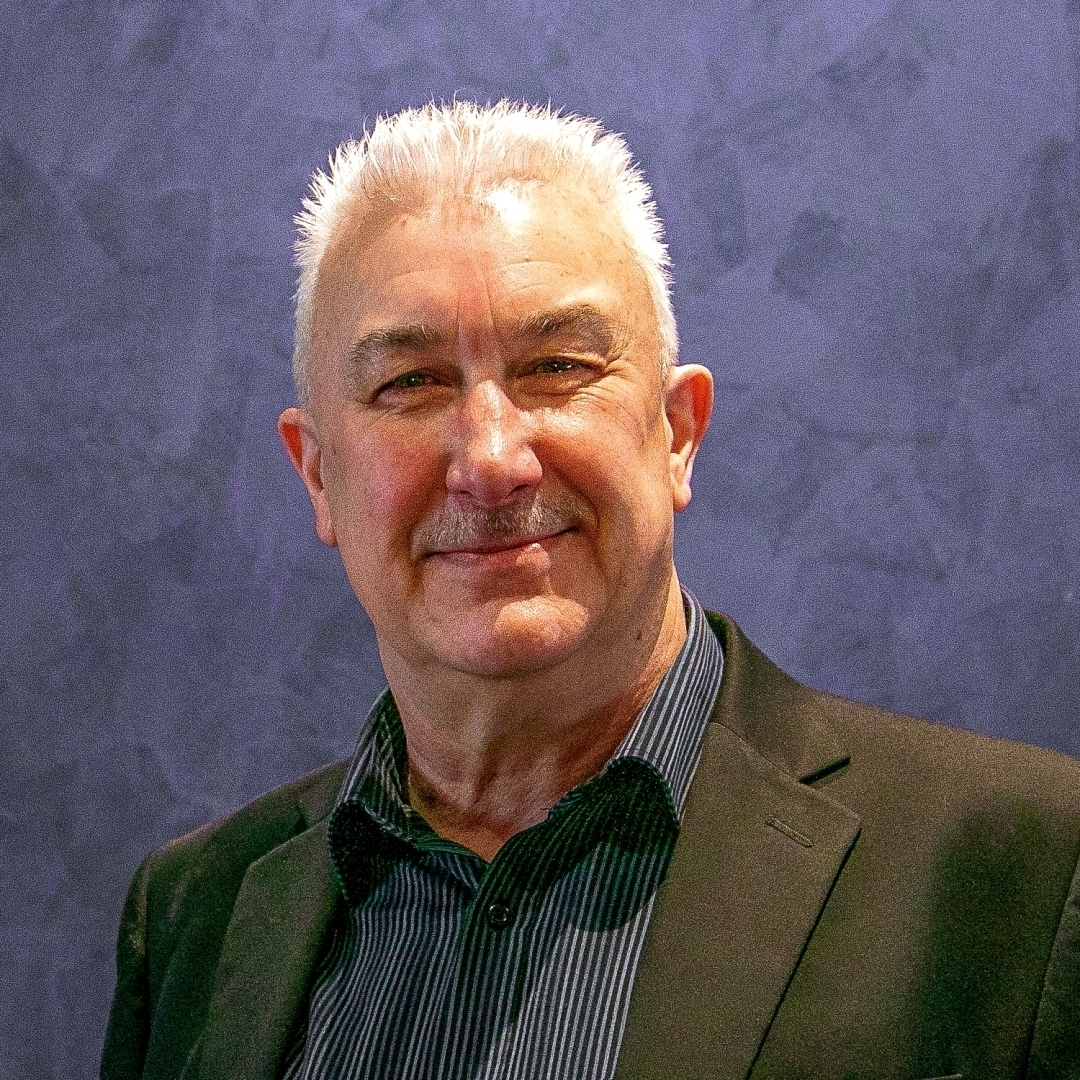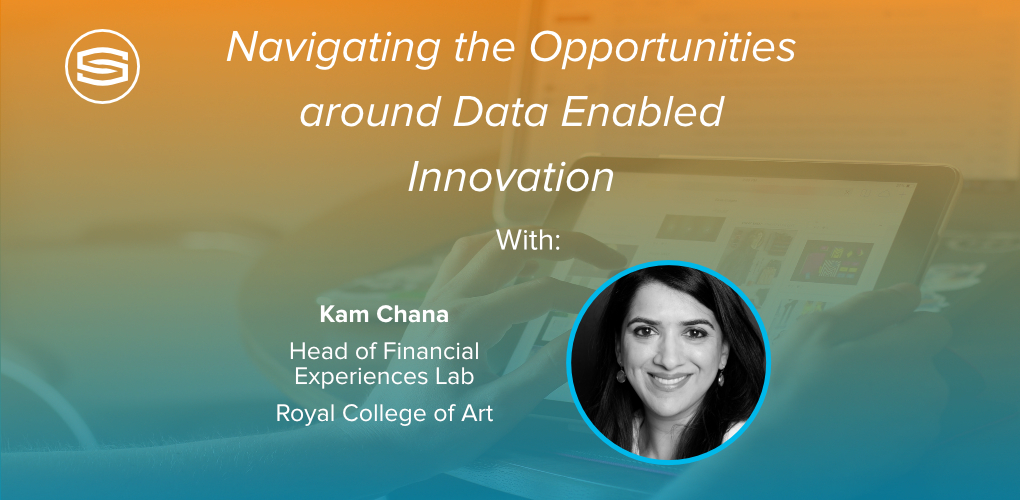
Insights & Opinions
Navigating the Opportunities around Data Enabled Innovation
Tue, 06 Dec 2022


Our guest this week, Kam Chana, started her digital career in 1999 working for Charles Schwab. Since then, she spent the last 23 years at the intersection of design and major digital transformations for the likes of Fidelity, Natwest / RBS, BlackRock, Barclays and a number of other banks, culminating in the last 6 years as Global Head of Innovation (Digital Platform) at Temenos. Her experience stretches across Financial Services, including investment banking, wealth and asset management, retail and corporate banking, credit cards and insurance, and her focus was to work with clients to identify future use cases which could be built into the product roadmap and brought to life.
Driven by her goal of finding even more original thinking and unique insights about where the world is going, she joined the Royal College of Arts in London in February 2022 as the Head of the Financial Experiences Lab as a lecturer and tutor. Her role here is to understand the challenges from a human, social and economic perspective and stoke and agitate the market. The Lab is a corporate/academic relationship. They are currently working with some tier 1 clients like UBS, Barclays, NatWest and JP Morgan, as well as a range of startups and socially oriented enterprises.
I was particularly curious to learn more about the kind of people that would sign up for her class as thinking back to my own Uni days (yes, they were a very long time ago), I'm not sure a class specifically focussed on Financial Services would have attracted too much attention on my campus!
Kam explained that hers is a service design postgraduate course and mainly consists of people in their late 20s and early 30s. Many of them are already established product designers or have an engineering background who have begun to realise the wealth of opportunities in financial services, not just redesigning what's already there but disrupting it from a human perspective. Her class is around 140 people - which I think is extremely positive for the future of financial services.
Where do you start?
It's clear that Kam is passionate about data-enabled innovation, so I wanted to know, "where do you start?". Before finding out what Kam had to say, we ran a quick audience poll
"Where do you start looking for opportunities to innovate with data?"
- Start with the data we already have
- Start looking what data we can get (APIs / Third parties etc.)
- Both of the above
- None of the above
- Wait - is this a trick question?
40% of our audience responded with "start with the data we already have" - which I have to admit is the approach I too have most frequently seen organisations take in the past. It's certainly not an invalid approach, and I have seen many organisations unlock new opportunities and generate new revenue streams, particularly with aggregated, anonymised user data that provides insights that third parties are willing to pay for (feel free to reach out to me directly if you are interested in hearing more about this) - but that's not the approach that Kam encourages her students to take.
"Ultimately, it's about starting with the human - starting with your customer, and understanding what it is they're doing? And more importantly, why are they needing it? So what's the need behind the task that they're trying to accomplish? What's the pain? What's the value? What's the driver? What's their goal?"
As a result, Kam always encourages her students to start with qualitative research and went on to say "a lot of organisations rely on quant because it's a safe space to hide. It's like numbers. It's like give me the Big Data, give me the big numbers. But we always encourage our students to start with the qualitative data because that uncovers the 'why' - what's the really important value or need that you're trying to meet, then design around that."
- The Customer - is at the centre. What are they trying to achieve? What challenges do they face? What isn't working for them? How can you create new value for them? Answering these questions informs the next layer
- The data - what data do you need to be collecting? For what purpose? How will you be collecting it? How will it help you to serve your customers' needs better? Answering these questions may well impact (or be constrained by) your next layer
- Technology - what architecture will enable you to leverage the data to meet customer needs? E.g. does it need to be "real-time"?
- Trust is the fourth layer in the model, with Kam stating that this encapsulates the regulatory framework - how will you build trust in data usage and remain compliant with the regulatory framework?
- Culture is the final layer in the model - How do you then create a culture that enables you to not just do a one-off digital transformation based on one unique use case. But to do this in a consistent way that makes your customers feel that you are also ultimately serving them, whilst you're doing it in a way that is commercially viable, technically feasible, and environmentally sustainable?
- Descriptive - what happened / what is going on?
- Diagnostic - why did that happen?
- Predictive - what will / might happen (if you don't take any interventions) and
- Prescriptive - how can we make it happen / what are our recommendations?
A basic model
You can visualise the model that Kam encourages her students to apply as a series of concentric circles - each one a "wrapper" around the next
Kam evolved this model over many iterations before finally settling on this approach which has served her well, and she has battle-tested it with multiple clients in the past with excellent results.
I found the final circle, "culture", to be the most interesting inclusion, as I'd never seen a financial services / data-related model that included this aspect. Kam agreed that it is the least spoken about but potentially the most important aspect of the model. She cited an example of DBS bank in Asia, which started off doing a tech-driven digital transformation project that pretty much fell flat because the employees weren't engaged. They stopped the project and worked through the above model, making sure that they focussed on the internal culture by engaging employees in the decision-making process and in that way they managed to cultivate an innovation culture across the board.
Generative value
The conversation then turned to where Kam believes the biggest opportunities for data-enabled innovation might lie in the future - in "generative" value from data, which is where many of her projects with the RCA students currently lie.
She explained that the inspiration for this comes from a Garner data analytics maturity model published around 2017 that describes 4 levels of data maturity
Taking the majority of PFM (Personal Financial Management) products offered in financial services as an example, most of them stop short of the predictive and even less venture into the prescriptive levels. In other words - no actionable insights are provided to the customer. In her previous role, Kam did a big project leveraging explainable AI to create a "virtual CFO" for small businesses. The product gave them the tools via a series of simple sliders to simulate different "what if" scenarios and actions and see the predicted results. As a result, it wasn't the bank providing the recommendations, but rather the bank providing relevant tools to enable the customer to make their own decisions. The AI then learned from the customer's actions and started offering automation suggestions based on customer behaviour - thereby saving them time and effort - Kam's best example of generative value from data enabled innovation.
This product was cross-sold to over 100 banks and has been extensively used in increasing financial health and wellbeing - I'm sure Kam would be happy to dig deeper into the topic if you reach out to her directly on LinkedIn.
The biggest barrier
To wrap up the session, I wanted to find out what the biggest barrier is that Kam most frequently encounters in exploring data enabled opportunities to innovate.
SILOS
"I think the things that I've seen that keep stopping us and tripping us up over and over again is a siloed architecture, and siloed cultures and siloed customer experiences, and siloed everything!"
Understanding the needs and priorities of every single stakeholder and learning to navigate the cultural and physical / technical silos in an organisation is a key skill required of any innovator and one that Kam teaches to all her students.
What's the biggest barrier to data-enabled innovation in your organisation? Join in the discussion in the comments below.



